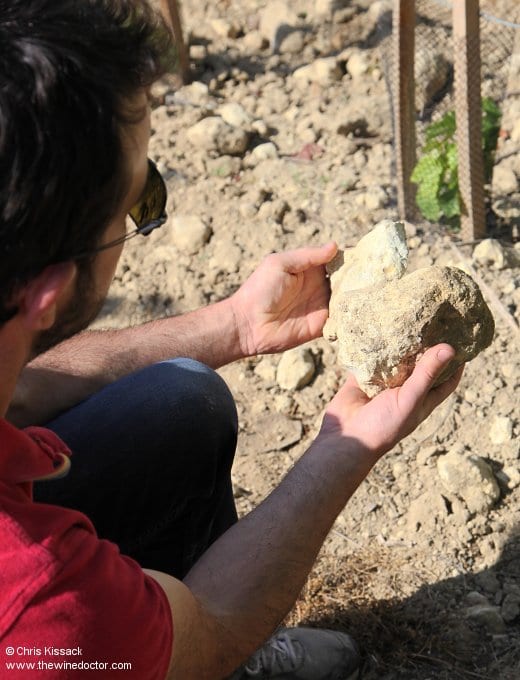Turonian Limestone
In this instalment of my guide to Touraine I focus purely on the Turonian limestones, which as I have explained in my introduction to Touraine geology are the dominant forms in the region. I explore their various subdivisions, how they are distributed throughout the various Touraine appellations, and I examine their relevance to the region’s wines. I will look at the other limestones of relevance to the region, namely the Cenomanian and Senonian, as well as providing a guide to the region’s soils, in subsequent articles.
The Turonian Distribution
If you can name a significant appellation in the Touraine region, then you can name one which features Turonian limestone, as it has a presence throughout (almost) the entire region. Given the fact that the depth of limestone deposited during the Turonian stage, which lasted four million years, is in parts up to 100 metres deep, this is hardly surprising. There is a lot of Turonian limestone to go around.
All the limestone in Vouvray is Turonian in origin, and this rock has a similarly strong presence in Chinon; the two rocks held by Mathieu Baudry (below) as he kneels in the upper parts of La Croix Boissée are both Turonian in origin. The limestone is highly regarded for viticulture in both appellations, whether for Chenin Blanc or Cabernet Franc. The Turonian stage is also in evidence along the banks of the Cher, a corner of Touraine which is easily overlooked but which is still blessed with desirable clay-limestone soils, and of course the limestone ridge which runs along the upper slopes of the Bourgueil and Saint-Nicolas-de-Bourgueil appellations is also Turonian.
It is perhaps tempting to conclude that Turonian limestone is ubiquitous, although this would be presumptuous. There is just one significant Touraine appellation where it does not play a role, and that is Montlouis-sur-Loire; here any limestone you can find is a little younger, having originated in the Senonian. And even this plays only a small part in shaping the appellation and its wines, which arguably reflect the region’s beds of clay and flint more than any limestone you might stumble across.

